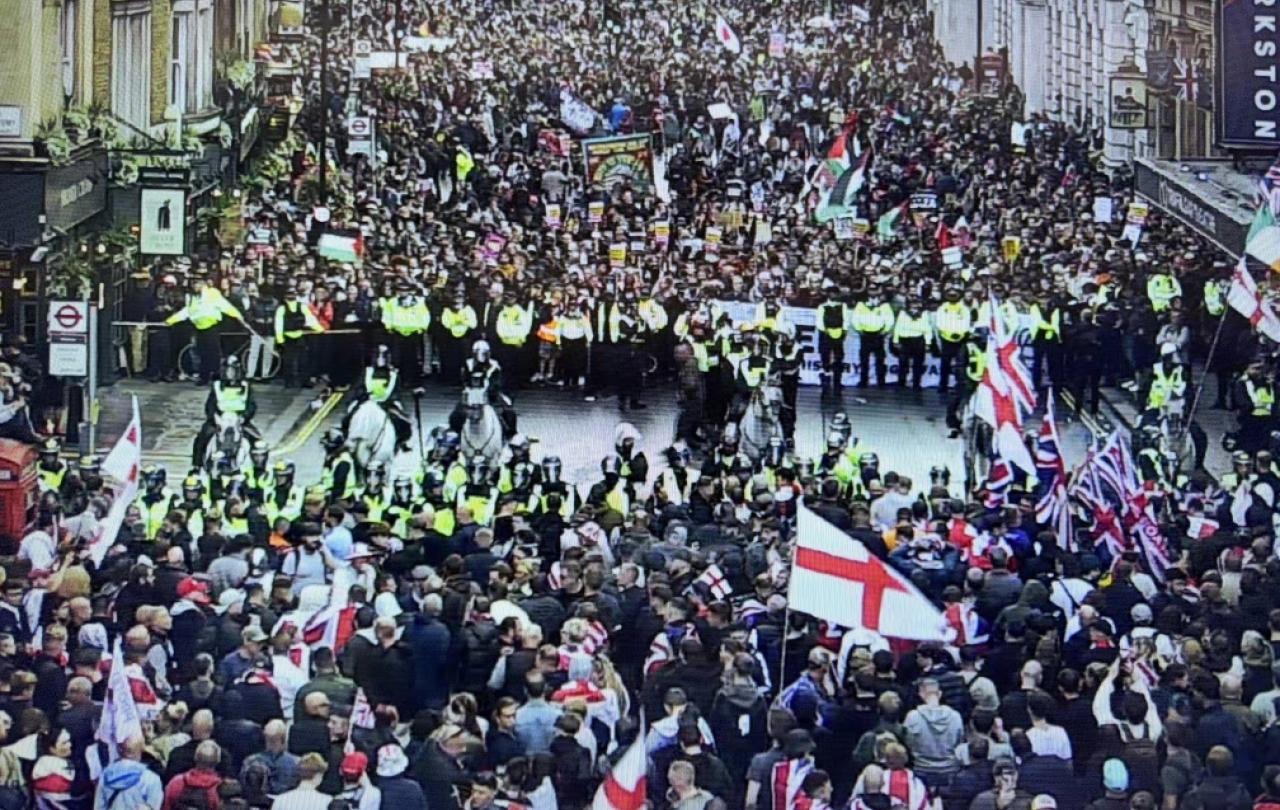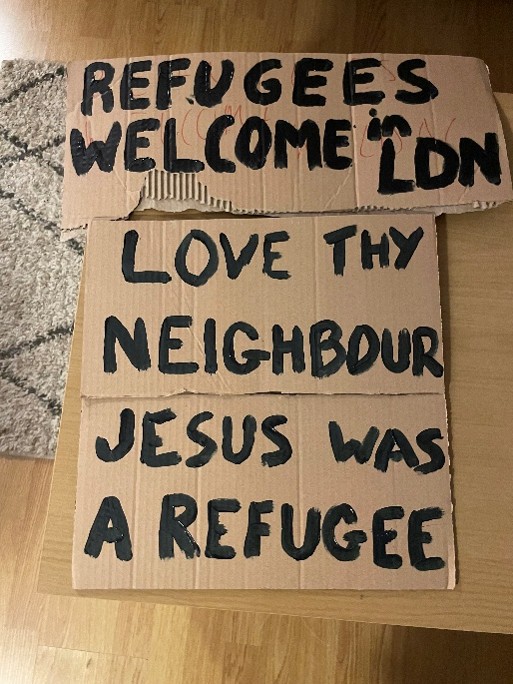August 31st marks the thirtieth anniversary of the historic IRA ceasefire. After decades of effective civil war in Northern Ireland, on this day in 1994, the nationalist paramilitary force announced “the complete cessation of military operations” and declared that they looked forward to a just and lasting settlement with “a spirit of determination and confidence”. While not without interruptions, that ceasefire has led to more than just a cessation of conflict. While still fragile, Northern Ireland has a functioning parliament, closer ties than ever with the Republic of Ireland, and the dissident threat – still present – is marginalised.
One of the remarkable elements of that day at the end of summer 1994 was how unlikely it seemed just a year before. The intensity of “The Troubles”, as the conflict is called, varied over the years but a series of atrocities in 1993 left an already traumatised population in a state of desperation. In March of that year, the IRA exploded bombs in the market town of Warrington. This callous attack clearly sought to strike terror into the hearts of English civilians – people who had no real connection to whatever injustices had been inflicted on the nationalist communities of Northern Ireland. Two children, Jonathan Ball and Tim Parry, were killed and almost sixty people were injured.
Another IRA bombing, in October of that year, caused outrage and disgust across Britain and Ireland. Again, hitting a civilian population, the Shankill Road bombing had been intended to target Loyalist leaders but ended up devastating a fishmongers. Ten people were killed.
Brutal responses followed from the Loyalist side. Five days after the Warrington bomb, the Ulster Defence Association murdered four construction workers and a week after the Shankill Road bombing the same organisation descended upon a Halloween party held in a bar in rural Derry, killing 8 people and leaving 12 with dire injuries.
Along with many other atrocities, the year ended with most people on the island dreading another generation of pointless violence. But below the surface, intense grassroots efforts and official negotiations were beginning to bear fruit.
The viewer is bound to see the peace process that emerged as a kind of miracle. How could forgiveness reign in the face of such savagery? How can a society build a future out of the wreckage of such a past?
This story is told vividly in the BBC documentary Once Upon a Time in Northern Ireland. Spread across five episodes, the show does not intend to offer an encyclopaedic analysis of how the Troubles emerged. Instead, it focusses on the experiences of the ordinary people embroiled – whether intentionally or not – in the conflict. The effect is deeply moving, even overwhelming at times.
So often, our culture engages with war and conflict as abstract concepts to be debated. Even in the context of active, live battle, we are typically presented with “talking heads” offering expert opinion. But in Once Upon a Time in Northern Ireland you get to hear from the people who planned the attack, or who conducted the arrests, or who were just trying to buy some fish for dinner when a bomb exploded in the shop. This direct testimony from those were caught up in the Troubles allows the viewer a visceral understanding of what is at stake, without having to understand the centuries of colonialism, conflict, and oppression that generated the civil war. That human trauma, that is glimpsed in great poetry or felt as an echo in a folk song is captured in this series directed by the award-winning James Bluemel.
There is a stubborn misunderstanding that the Northern Irish conflict was “Catholics against Protestants”. Once Upon a Time in Northern Ireland disposes of this myth, if in part by showing how those two groups were never distinct. It was a complex conflict fuelled by land and ideology, traumatic history and conflicting cultures. Religion was a component of course, but expressed through the lens of sectarianism, the almost racial animosity that grew up between the opposing tribes, the marker that differentiated them. When one man, named Michael, is shown tending gently to the racing pigeons he keeps, the effect is incongruous in the extreme because his story is one of unimaginable despair.
He was raised Catholic; his mother was Protestant. She had ten children. And one day, two women showed up at their home and took his mother away and she never returned. The IRA killed her. It wasn’t because of her views on Papal primacy or biblical authority. Something even more absurd and terrifying was at work here, a hatred that at some point did not even need justification.
The consequences of each callous and brutal attack rippled outwards, affecting not just the victims but their loved ones and then their community. By the end of the five episodes the viewer is bound to see the peace process that emerged as a kind of miracle. How could forgiveness reign in the face of such savagery? How can a society build a future out of the wreckage of such a past?
That was their baseline assumption throughout – no one at the table was “happy with the fact that thousands of people had been killed and maimed.”
This exposes one of the limitations of the format of the series. By placing the perspectives of ordinary people at the centre of the narrative, profound truths are exposed. But the mundane details of how the peace process developed – why it was the IRA agreed to a ceasefire and how things developed from there to the Good Friday Agreement and the years since – are unaddressed. Perhaps a sequel is required where the politicians and diplomats who made that possible are given the chance to tell that story?
One of the undoubted architects of peace in Northern Ireland is Bertie Ahern, who was the Taoiseach (Prime Minister) of the Republic of Ireland from 1997-2008. I sat down with him to do just that – to hear his recollections of the process that brought about peace. Since his youth, he had always taken a keen interest in Northern Ireland – “I took a particular interest in the Civil Rights movement when we were in school; that was before it got into the violence.” Raised in a Republican family just north of Dublin city centre, once the Troubles began, it was hard “not to be subsumed into everything that was happening on the island.” As he became a political leader, he was keenly aware of how the violent conflict exacerbated underlying problems – even his vision for economic regeneration in the Republic was blocked because “part of the reason that it was difficult to get investment and to get people to come here was the Troubles.”
As he remembers the process, it would be misleading to think it popped out of nowhere in the 1990s. There had been attempts through the years, notably with the Sunningdale Agreement in 1973 and the Anglo-Irish Agreement of 1985, but also through less publicised conversations between the peacemakers and paramilitaries, like the conversations led by Fr Gerry Reynolds at Clonard Monastery – which began to generate movement. He attributes the ceasefire to the Downing Street Declaration that was orchestrated by the British Prime-minister John Major and Ahern’s then boss, Taoiseach Albert Reynolds, on December 15, 1993. That showed a serious willingness from London to engage, and the 1994 ceasefire was the result.
But when the ceasefire broke down in 1996, all that work dissipated. “That was a disaster, really.” With the election of Tony Blair, Ahern suggested they “take it up again”. With a concerted focus – “I was nearly doing the Northern stuff full-time” – progress was restored. He remembers that the negotiations involved ten different parties, including the British and Irish governments and the active and influential participation from the American government and “went on practically non-stop from September 1997 to Good Friday 1998.” The strategy sought to be as inclusive as possible – “we would try and get everyone in” – and “to be as comprehensive on the issues” as possible, so that no issue was off the table. Patience and resilience were central. Although there was “a huge amount of conversation and talks up to Christmas, it didn’t really gather momentum until February.”
With the “totality of all the issues out on the table”, the dialogues began to bear fruit. How draconian legislation might be rolled back, how paramilitary prisoners could be released, how demilitarization would proceed and how the police could be reformed. He remembers that negotiations on that question – the reform of the corrupt Royal Ulster Constabulary police force – went on deep into the Good Friday night, April 10th. When an obstacle appeared, the London and Dublin governments reminded people of the goal of stopping the violence. That was their baseline assumption throughout – no one at the table was “happy with the fact that thousands of people had been killed and maimed.” The second guiding principle was that “you have to try to treat everyone with dignity, regardless of what views they have.” And slowly, rapport was built up between people who had been combatants.
When the agreement was finalised, a kind of euphoria followed. “That week we were just at it night and day; we had been at it night and day since March.” But the celebrations, as intense as they were, did not linger. The agreement had to be passed by popular referendum in both the North and the Republic of Ireland. And the work continued even after that. Ahern notes that it took years to achieve an agreement “and then another ten years to implement it”.
But the effort was undeniably worth it. “I think the big success of the Good Friday Agreement was that the Troubles have by and large ended.” And the story of how that happens traces back to a cassette tape released in August 1994 announcing the IRA ceasefire.






